8/6/2024: The Cellini of Chrome is available for $45 directly from Racemaker Press.
The Cellini of Chrome, The Story of George W Walker / Ford Motor Company’s First Vice President of Design
by Helen Hutchings
Three men are generally recognized and acknowledged as having been the most directly responsible for bringing styling and design into the corporate functions of major Detroit automakers. The lives and careers of two, Raymond Loewy and Harley Earl, have been examined and recounted in numerous books, yet it is only now that the third, George W. Walker, is the subject of a book.
The Cellini of Chrome, The Story of George W Walker / Ford Motor Company’s First Vice President of Design takes its title from a November 1957 issue of Time magazine that featured Walker on its cover. The irony here is that Time had featured Raymond Loewy on the cover of an October 1949 issue—but never published a cover feature on Harley Earl.
Walker and Loewy also shared in common having established and operated their own highly successful industrial design firms, bearing their respective names. The client list of each was numerous and varied and meant the items each designed was equally diverse. Both men understood the important contribution good styling and design contributed to the desirability of a product (any product) and thus its maker would enjoy concomitant increase in sales that their newly well-designed product—including automobiles—would attract.
Henry Dominguez is the author of Cellini of Chrome. He has written several earlier published titles, two of which your commentator has read and I think highly of both—as is also the case with this, his newest. (Should you be curious, those earlier two are Edsel Ford and E T Gregoire, published in 1999 by SAE and The Last Days of Henry Ford, a 2014 issued book from the same publisher as this Cellini, Racemaker Press.)
Given all the cross-pollination one vehicle manufacturer to another (then and now) between their respective departments—with design or styling studios no exception—GM people and history intermixes into Walker’s essentially Ford-focused (yes, there’s a bad pun there) story. Notable is one regarding how Walker gained entrée into Ford Motor Company in the first place.
George Walker and Ernie Breech had long been good friends regularly golfing together commencing during the years Breech word for GM and extending thereafter. Less than a year after Henry Ford II was installed at the helm of Ford Motor Company he hired Breech away from GM to be his Executive Vice President. So every time design input was needed Breech made sure Walker was front and center doing the work or involved in the competition until ultimately Walker was hired as Ford’s first-ever vice-president of Styling, as Walker named his department.
Actually, while still owning and operating his own design business, Walker had done a bit of work for GM. Even more interesting, as his industrial design firm had made him a wealthy man, he chose to gain and maintain many of his business contacts via memberships in private clubs. One of them, Detroit’s Recess Club, elected him its president in 1949. Subsequently, according to Dominguez, Walker “had a lot of meetings with Harley Earl because [Earl] was trying to get people in the club. They had to go through me [Walker speaking] at that time. So we [Harley and Walker] were very closely associated.”
George Oros too was a GM designer before being hired by Walker’s firm and thus eventually becoming a key designer at Ford. All of that cross-pollination has led to inclusion in this commentary of several images from this book that you’ll find below. In each, one or more name of an individual is unknown. If you recognize any, please tell us by way of adding a comment, who, by name, you believe that person or those individuals may be.
Of course the story of the design—then redesign—of what would become the production ’49 Ford, that company’s first new car since the conclusion of War II, is told again. But there’s so much more in this book for Henry Dominguez has written about Walker, personally and professionally. Moreover he’s told all aspects of the story engagingly, informatively, and entertainingly—and yes, it includes some of the same type of studio hi-jinks that took place within Ford’s Styling as those Gary Smith relates on the pages of Dean’s Garage.
The Cellini of Chrome, The Story of George W Walker / Ford Motor Company’s First Vice President of Design is highly commended not merely for inclusion on your library’s shelves but to actually sit down and read purely for the enjoyment of what Henry Dominguez has written and the story he’s told.
Title: The Cellini of Chrome
Subtitle: The Story of George W Walker / Ford Motor Company’s First Vice President of Design
Author: Henry Dominguez
Description: 384 pages, 11” x 10.25”, hardcover w/dust jacket, 250 b/w & 78 color photos but (alas) no index
ISBN: 978 0 999 8754 3 8
Publisher: Racemaker Press, 2020 www.racemaker.com
List Price: $90
Cover of Dust Jacket
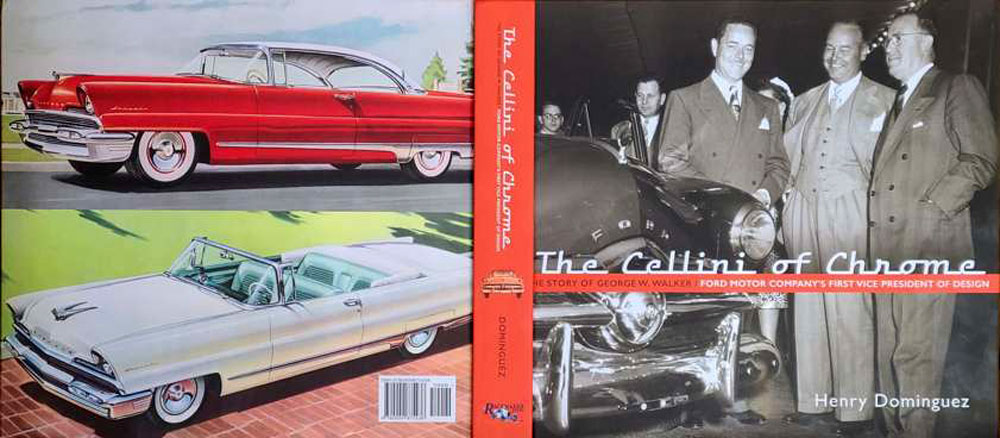
Book Cover
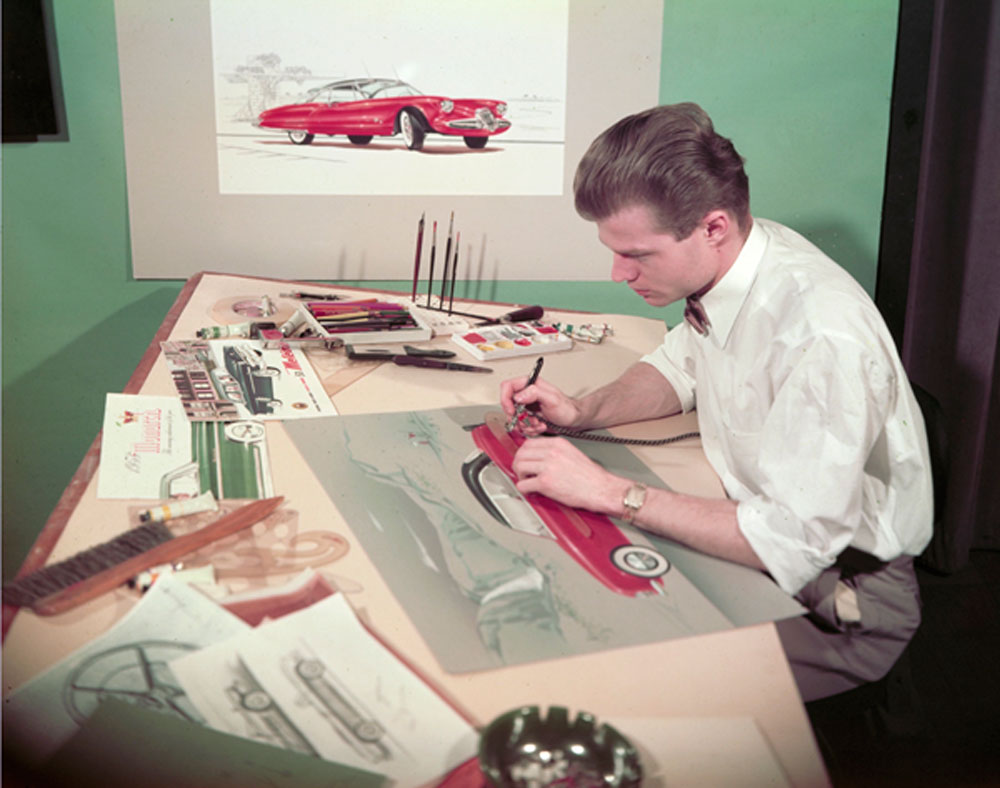
Pg 229 is another designer at work in Ford’s new Styling Building around 1953 in an image from Ford Photomedia. Does anyone recognize this man?

Pg 162 is an unidentified designer in 1952 courtesy the collections of The Henry Ford. Does anyone recognize who this man is?
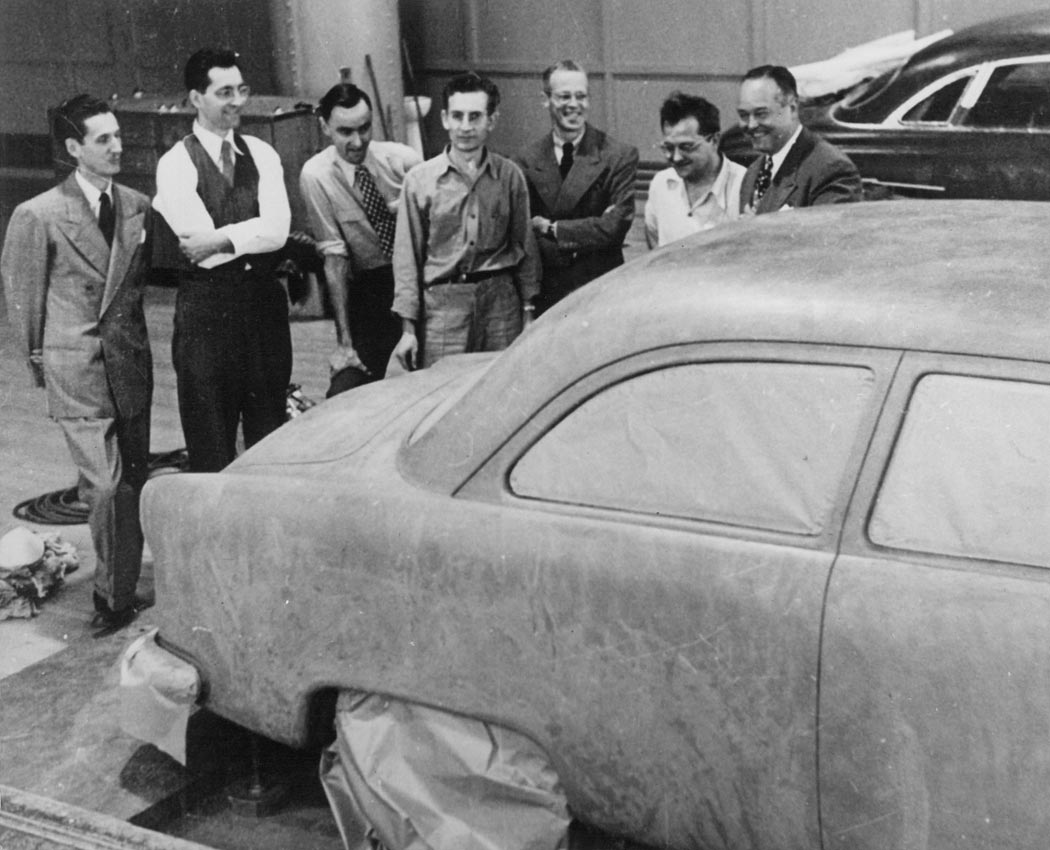
Pg 122 Photo courtesy Janet Oros Weise shows (right to left) George Walker, unknown, unknown, unknown, Elwood Engel, Joe Oros and Frank Francis who was Bob Gregoire’s right hand man. Can you help put names to any of the three “unknowns”?
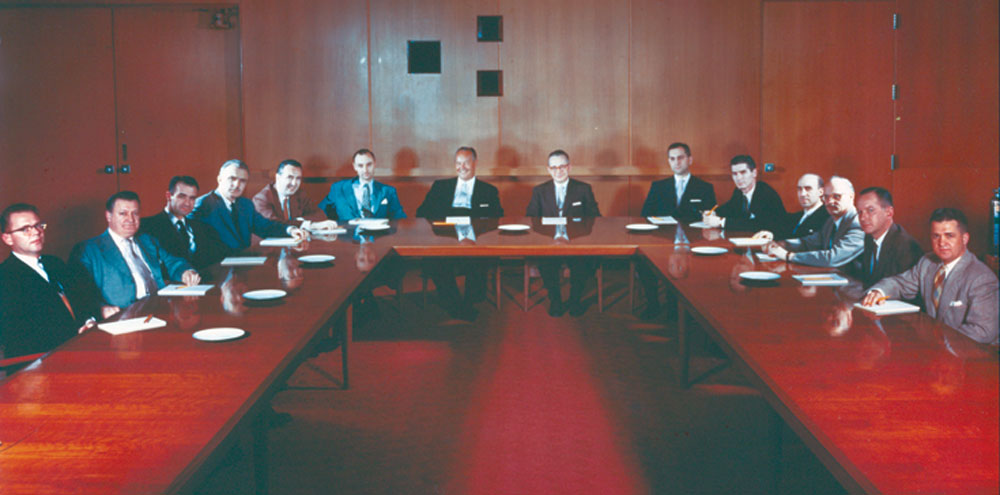
Pg 298 is a photo courtesy John Najjar showing styling staff shortly after Walker was appointed its vice president. L to R are David Ash, Charles Stobar, Wes Dahlberg, Robert Maguire, Gene Bordinat, Elwood Engel, George Walker, unknown, Joe Oros, Roy Brown, John Najjar, Alex Tremulis, unknown, unknown. Can anyone help identify and of the three “unknowns”?
Pg 95: Courtesy Bob Todd is an image of members of Ford’s Design Department who would gather weekly at Parkland Bowling Alley on Detroit’s west side for some stress relieving exercise. Some men are identified. Can you help us put names to any of the other faces?

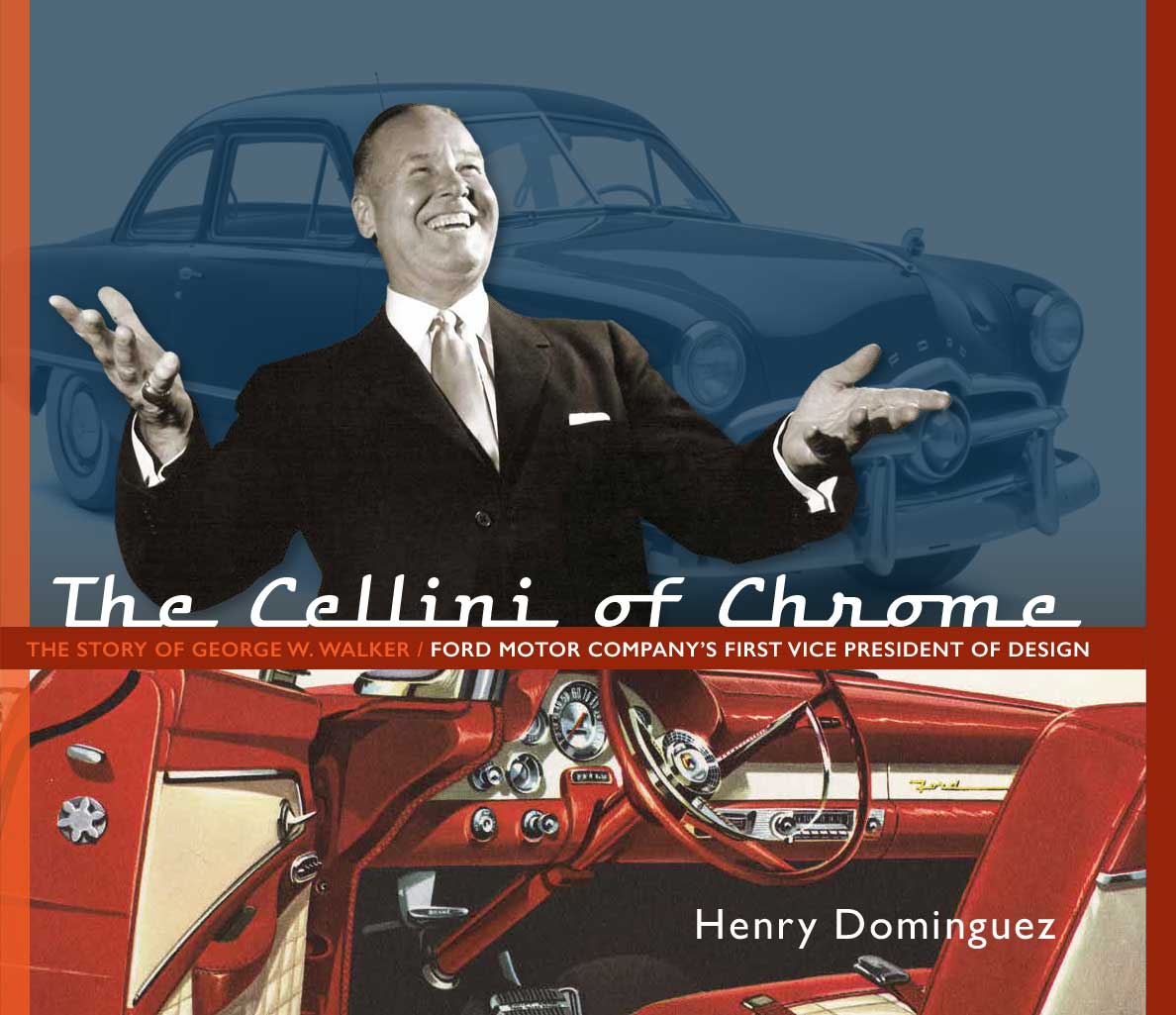
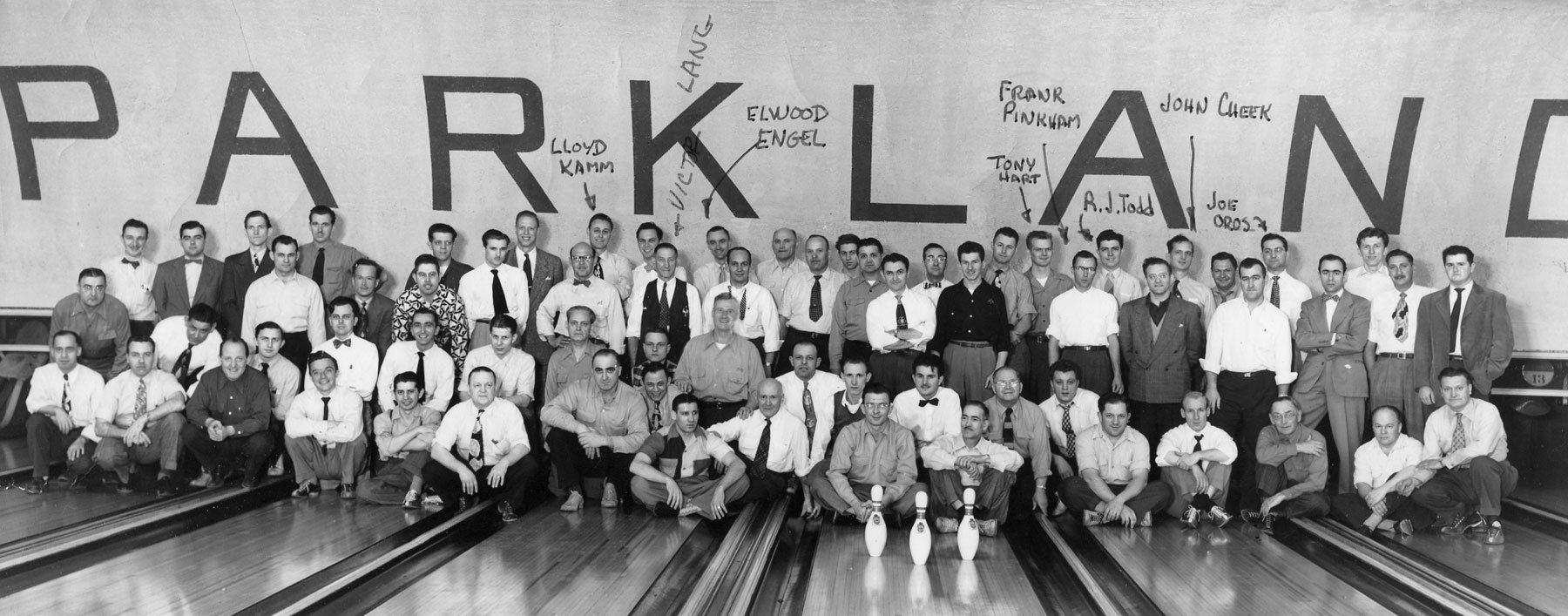
I purchased this book when it first came out and thoroughly enjoyed it. What a great story. If nothing else, G. Walker could be referred to as a ‘colorful character.’ The beginnings of Ford Styling/Design is a fascinating story. The cast of characters runs the gamut. Highly recommended.
My dad, Frederick Silfven, worked there as a modeler (“sculptor”) beginning in 1953 and until retirement. Everyone knew him as “Fritz”. I also worked at the Engineering Center for 35 years, mostly in Product Development.
At this time, the Center is being updated with new buildings. The projected cost is roughly one billion dollars. Most of the places I worked have been demolished at this time and will be replaced with new up-to-date ones.
I knew six of the gentlemen in the photograph, my uncle being 2nd on the left, Charles Stobar. My father, Leonard Stobar would take me on Saturdays to George Walkers offices in the Fisher Building and have me sit in the design area while he worked with Joe Oros and Elwood Engel.
Elwood would give me drawing paper and set me up at a drafting board so I could stay busy while they worked on a full sized clay model in the studio. I remember it well. These were my formative years, As I was only 6 or 7 years old at the time.
I eventually graduated from the Art Center College of Design in California, and was hired by Ford as a new designer in 1964. I later taught at the ArtCenter for 15 years, teaching all my students almost everything I had learned from my uncle and my father. There is a lot more to tell but just suffice to say that I knew and worked with at least six of the gentlemen shown in the photograph.
Len Stobar
As always, more information is greatly welcome. It seems that the author missed the significant contribution by Virgil Exner to bringing design into the corporate mainstream. He was responsible for a string of non-cartoonish concept cars that led to the industry setting 1957 Forward Look and the subsequent fin wars. His efforts and success led to establishing Styling at Chrysler, as a separate entity that didn’t report to engineering. Packard and Studebaker should not be ignored, since Ford did some big layoffs in 1955, sending people all over the industry. GM was know for not hiring designers from the other car companies, at least to the ’70s.
One of those unknowns has to be Frederick Hoadley. He died in 2012. He wrote a book entitled: Automobile Design Techniques and Design Modeling.
https://www.amazon.com/Automobile-Design-Techniques-Modeling-Materials/dp/0966767306/ref=sr_1_1?Adv-Srch-Books-Submit.x=21&Adv-Srch-Books-Submit.y=12&dchild=1&qid=1611436253&refinements=p_27%3A+frederick%5Cchoadley%2Cp_28%3AAutomobile+Design+Techniques+and+Design+Modeling.&s=books&sr=1-1&unfiltered=1
I’ve been working on a book project and while its not focused on auto design in depth it does reflect on it. I continue to come across articles and books that support the fact that Virgil Exner was a monumental auto designer. It is said that Harley Earl cried when he left GM. The one thing that impresses me the most about Mr. X is that he accomplished so much with so little. He and Bill Mitchell, who I am also a major fan of, were friends. Mitchell had the resources of GM and all their design staff. Walker had Ford. Exner had to rejuvenate a languishing Chrysler. He did it in a few years time. He created early successes for Pontiac. He made heroic leaps for Studebaker, not even credited fully in some circles. For me, it’s X, though I’ll always acknowledge Mr. Earl as the father of corporate auto design. Mr. Loewy, he gets credit for industrial design influence, not auto design magnificence.
The best of the designers who I think accomplished so much with so little was Richard Teague. An good example was the Hornet body design which debut in 1970 and the same body was used up to the Chrysler merger in 1987. Also Harley Earl had his own outside design business Ford and Earl. I also think I worked at Amc with Peter Silfvens brother Paul.
Jack Telnack
The first man on the right side of the conference room photo is:
Don DeLaRossa who later on became head of Chrysler Design.
BTW, Henry Dominguez asked me to write this Testimony which is on the back of The Cellini Of Chrome book cover.
I worked for George Walker, and The Cellini of Chrome has captured the man to a tee! Having witnessed his unique approach at the office, and learning of his enjoyment at the Benson Ford’s Anglers club on Key Largo, I knew Walker had fun. I can still see his tan and smell the Faberge cologne. But, he had a serious side as well.
George Walker’s management style of giving power to his designers to gain power, had a far reaching affect on what I call the Second Coming of the 49 Ford — the 86 Taurus. The industry environment was similar in that Ford Motor Company was losing millions of dollars a month and the designers were working under pressure to achieve dramatic change. The similarities between the 49 and the 86 were uncanny, with both cars having break- thru designs, featuring soft, rounded aero surfaces and body sections. And both cars were smash hits!
I’m sure George was looking over the shoulders of the Taurus design team.
My predecessor, Gene Bordinat, said that he would always put his money on a lucky man. George was not only lucky; he had talent, flair, charisma, and —– one
of the most important attributes of all —– timing. I’m sure George had a subliminal effect on all of us at Ford Design …… especially me.
Speaking of Fred Hoadley: I met this consummate professional about 1980 when he was hired on to help my little group translate my design for a Datsun pickup based “minivan, before there was minivan on the market. This work was done while I was at Coachmen RV, then the second largest RV maker in the U.S. Fred and I worked together off and on over the years, including at J.I. Case, and his skill and quiet professionalism never ceased to amaze me.
He and his family were some of the most memorable people I’ve ever known or enjoyed working with. Dennis F. Otto
8/6/2024: The Cellini of Chrome is available for $45 directly from Racemaker Press.